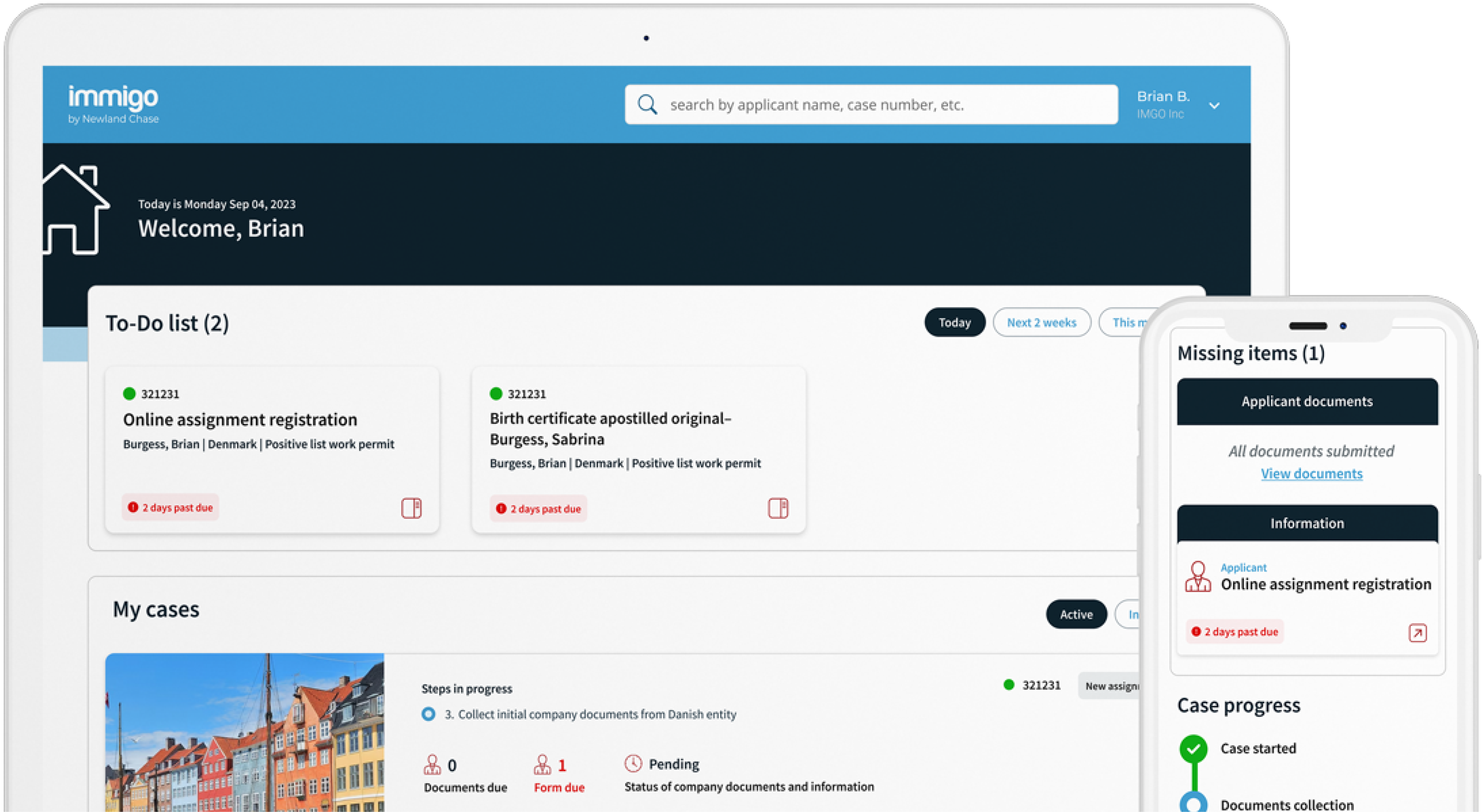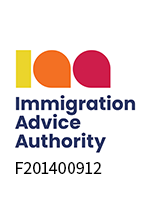Get The Visibility Your Company Needs
Reduce compliance risks and mobility costs while managing individual and project-related travel with ImmiSMART: the solution that unifies your travel and mobility programs.
Plans to Modernise the EU’s “Schengen” Visa System Move Forward
May 30, 2018
In early February of this year, a three-month public consultation on “Modernising the EU’s Common Visa Policy” ended with comments and contributions having been submitted to the European Commission by thousands of individuals, corporations, and organisations… including an extensive position paper submitted by Newland Chase. Included in our submission were numerous suggestions from and behalf of our clients and participants in our widely-attended webinar “EU Schengen Visa: Present and Future” held in January. As one of the world’s leading providers of professional processing and advice on business and work visas and permits to the European Union (EU), Newland Chase felt compelled to advocate our clients’ interests in the public consultation, and as promised… we continue to follow the progress towards an improved Schengen Visa system.
Now four months since the close of the consultation period, we thought it appropriate to take the opportunity of this week’s blog to do a brief recap of the suggestions made on behalf of our clients, the plans to refine the Schengen system now moving forward, and catch-up on other visa news from the EU impacting business travel and corporate immigration… including Schengen Visa changes, the coming ETIAS and EES systems, and upgrades to the VIS system.
What is the “Schengen” Short-Stay Visa?
Commonly referred to as the “Schengen Visa” or the “Schengen C Visa”, the Schengen short-stay visa authorizes entry for business and tourism purposes into one or more of the 22 Schengen Area EU member countries or the four Schengen Area non-EU countries. Applicable for nationals of 105 countries, the short-stay visa authorizes stays in the Schengen Area of Europe for stays of up to 90 days in any 180-period. Nationals of another 62 countries are granted a similar 90-day in 180-day visa-free entry option.
While in principal the Schengen Visa (either single entry or multiple entry) is intended to provide a standardized short-stay multiple-country visa process for all Schengen Agreement nations, the current applications process is handled through the individual countries’ overseas consular posts, and variations in how these individual countries interpret and apply the common visa policy persist – especially when it comes to application requirements, validity periods, and business activities permissible under the visa. For an overview of the Schengen Visa system and current issues for business travellers, readers can request a complimentary recording of our webinar “EU Schengen Visa: Present and Future” at [email protected].
What are Newland Chase’s Suggestions?
Among the general suggestions for improving the short-stay “Schengen” Visa system included in Newland Chase’s position paper were:
- Standardise and streamline the applications process by more clearly defining application standards, reducing the processing deadline from 15 to 10 days, and deeming biometric requirements satisfied for subsequent applications submitted for a period of 60 months.
- Standardise the approach to “permissible activities” with EU-wide rules and guidance on what work and business activities can be undertaken on a Schengen Visa. Included in this suggestion was permitting limited work activities related to equipment and products sold to Schengen Area customers and permitting employee training at related company locations for periods of up to 90-days.
- Standardise and liberalise border entry standards for visa holders by allowing “de minimis” changes to the visa holder’s original travel itinerary, allowing them to enter the Schengen Area through any one of the listed member nations.
- Shared electronic application system should be used by all member states, allowing applicants to lodge Schengen Visa applications online and receive electronic e-visas.
- Streamlined application process for frequent applicants, i.e. “red carpet program”, should be available for Schengen Visas in all member states.
- Longer visa duration for “touring activities” or establishing a “touring visa” to accommodate those in entertainment and the performing arts that visiting numerous Schengen Area locations over cumulative periods on tours of over 90 days.
What Changes to the Schengen Visa Are Being Proposed?
On March 14, the European Commission made a number of proposals for reform of the EU’s common visa policy and the Schengen Visa system, which include:
- Faster and more flexible procedures: The decision making time for visa applications is to be reduced from 15 to 10 days; applications may be submitted up to 6 months in advance of their planned trip (instead of the current 3 months); and applicants may fill in and sign their applications electronically.
- Multiple entry visas with longer validity: Harmonised rules should apply to multiple entry visas to better prevent “visa shopping” and to reduce costs and save time for member states and frequent travellers. Such multiple entry visas will be issued to trusted regular travellers with a positive visa history for a gradually increasing period from 1 up to 5 years. Travellers' fulfilment of entry conditions will be thoroughly and repeatedly verified.
- Short-term visas at external borders: To facilitate short-term tourism, single-entry, single-country, 7-day visas may be issued directly at external land and sea borders under temporary, seasonal schemes subject to strict conditions.
- Additional resources to reinforce security: A moderate increase of the visa fee (from €60 to €80) should be introduced. This increase is meant to maintain adequate levels of consular staff worldwide to ensure stronger security screenings, as well as the upgrading of IT equipment and software, without representing an obstacle for the visa applicants.
- Feasibility study on digital visas and a fully digitised visa application process should be begun before the end of 2018. (Newland Chase has long advocated this and will be watching this development with great interest.)
Also included in the proposals were general internal changes designed to enhance cooperation and standard processing of visas across all EU member states. At present, these proposals are just that: “proposals” of the European Commission to the European Parliament. Before actually being implemented, the proposals must be acted upon by the European Parliament and the European Council.
With that stated, Newland Chase is enthusiastic about these changes and seeing the substance of many of our suggestions of our position paper addressed. Once adopted, these proposals should significantly benefit business travellers, especially frequent travellers, to the Schengen area through faster, less-expensive, and more convenient applications processing and more flexibility for frequent and last-minute travel.
What’s the Latest on the “ETIAS” System?
Newland chase is also following the related development of a European Travel Information and Authorisation System (ETIAS) – a visa waiver pre-screening program for EU countries. The ETIAS system will operate similarly to the electronic travel authorizations (ETAs) already in use in the U.S., Canada, and Australia. The requirement to obtain an electronic clearance through ETIAS will apply to nationals of the 62 non-Schengen Area countries currently granted visa-free entry to the Schengen Area for stays of up to 90-days and a 180-day period. The ETIAS clearance will be obtained online by travellers for a fee of €7 and will be valid for three years.
On April 25, the European Parliament and the European Commission reached a final agreement on moving forward with the establishment of the ETIAS system. However, formal enactment of the legislation still must be acted on by European Parliament and the Council. The proposed timeframe for implementation is currently starting in 2020, with the system fully operational by 2021.
Is the “ETIAS” Different from the Proposed “EES” System?
Concurrently with the ETIAS, the EU is also working to implement a new electronic Entry-Exit System (EES) at all borders into the Schengen Area. While the ETIAS is an electronic travel authorization for visa-free nationals, the EES is an electronic registration system for all foreign nationals entering and exiting the Schengen Area. The benefit to EU member states is improved security through tracking and management of data on travellers through their borders. The benefit to business travellers should be faster and more convenient border crossings by digitizing the entry-exit process and eliminating the need for the current passport stamping process. Frequent travellers will also appreciate not having to add additional pages to or frequently renew their passports because of them filling with stamps from numerous trips through the Schengen.
The EES was formally adopted by the European Council in November of 2017 and is expected to be operational sometime in 2020. Currently, there is no unified electronic system for recording the entry and exit of foreign nationals through the Schengen Area.
What’s Happening with the “VIS” System?
On May 16, as a companion proposal to the changes to the Schengen Visa system, the European Commission also proposed to the Parliament upgrades to the Visa Information System (VIS). The VIS is the electronic database of information on persons applying for Schengen Visas shared by all visa-issuing member states. The upgrades are intended to increase security by allowing more thorough background checks and greater information sharing among the member states. The proposed changes include adding long-stay visas and residence permits to the system. While the upgrades to VIS should improve security, Newland Chase anticipates little noticeable change to the applications process for most business travellers.
Newland Chase Covers the EU: Additional Resources
Each year, Newland Chase assists thousands of business travellers and company employees in both short-term and long-term assignments in Europe. With so much of our clients’ business interests in Europe, we obviously keep abreast of the latest changes impacting our clients. This blog presented a brief, “just the facts” run-down of the latest developments. For more detailed information, continue to follow this blog, and readers are encouraged to reach out to their Newland Chase contact or email us at [email protected]. Also, feel free to subscribe below to our newsletter to have up-to-date news from the EU and around the world on vital global immigration changes for corporations delivered to your inbox once each week.
The European Union and Schengen Area present major benefits and opportunities for successful companies expanding globally… but also present their share of business travel and immigration challenges. For the latest information and insight on issues for companies assigning employees to the EU, register for next week’s live interactive webinar Uncover the Hidden Risks of Intra-EU Employee Mobility on June 5 at 11am EDT/4pm BST when Newland Chase’s Jason Rogers, VP and Senior Global Immigration Counsel, and Sophy King, VP of Global Immigration, help demystify the oft-confusing intersection of immigration, labour law, and social security for companies with foreign employees in Europe… posted worker notifications, document retention requirements, and labour inspections included. This session is a must for all HR and global mobility managers in Europe. To attend and/or receive the recording, register on the Newland Chase website here.
This blog was prepared by Newland Chase. It is informational only and is not intended as a substitute for legal advice based on the specific circumstances of a matter. Readers are reminded that immigration laws are fluid and can change at a moment’s notice without warning or notice. Please reach out to your Newland Chase contact should you require any additional clarification or guidance. Written permission from the copyright owner and any other rights holders must be obtained for any reuse of any content published or provided by Newland Chase that extend beyond fair use or other statutory exemptions. Responsibility for the determination of the copyright status and securing any permissions rests with those persons wishing to reuse this blog or any of its content.




